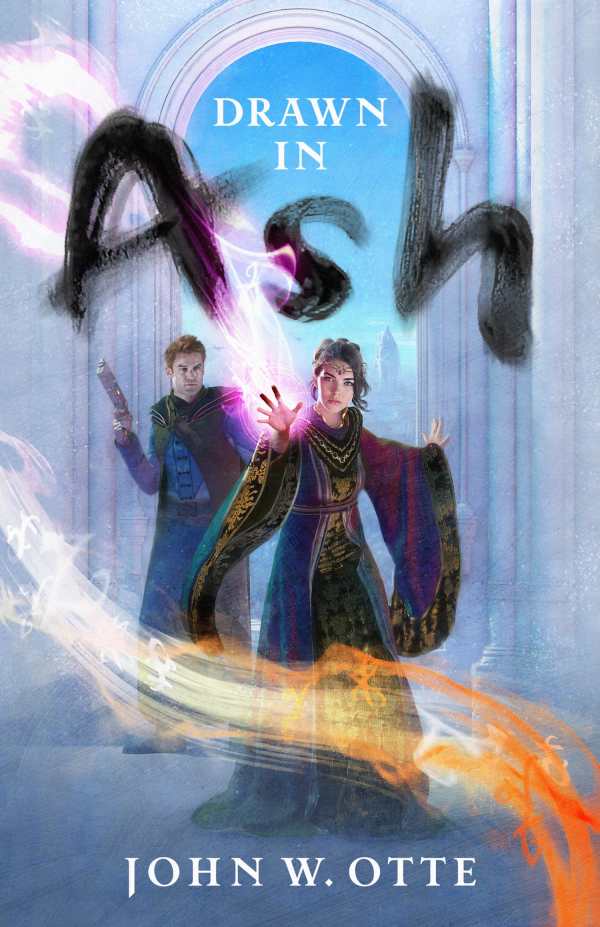Drawn in Ash
Drawn in Ash is an exciting science fiction and fantasy tale whose heroine’s struggles reflect the eternal importance of cultural respect and tolerance.
A blend of science fiction and fantasy, John W. Otte’s novel Drawn in Ash uses a diverse cast and tension-filled plot to share lessons on respect and courage.
Everys is reluctant to leave the safe, if rather dull, life she made for herself in Fair Havens. But she is not given the choice: she is thrust into a life as the wife of King Narius, a man whom she at first despises. Everys decides to use her position to better the kingdom. She also hides a deadly secret: she is a mage, with the ability to use illegal Siporan magic. When a crisis arises, Everys decides what she is willing to risk—all while battling growing feelings for Narius.
Everys is a fiery character whose care for the people of the Xoniel Dynasty runs deep. She shows her generosity when she uses her queen’s allowance to set up a center where Fair Havens’s poorest citizens can receive food. Though she is overwhelmed by her new role, Everys stands up to King Narius and his advisor Paine when she believes that it is right to do so. But despite her otherwise curious nature, she often leaves questions—such as who sent her to the king’s room in lingerie—unaddressed for unreasonable amounts of time, a fact that makes the eventual answers to such questions frustrating.
Narius is a good balance to Everys. He’s less rash than her, though he, too, can hold his own in a fight. He respects Everys and finds himself falling for her, even as he wrestles with feelings for his first love, Princess Innana of the rival Dalark Imperium. His unconditional acceptance of Everys, even after learning of her abilities, highlights the book’s major themes of tolerance and acceptance. Pedrevor is a planet with many species and races who attempt to live together and share power. Everys herself is a Siporan, part of a group that once had its own empire, the Ascendency. The Siporans now face discrimination, as do other people deemed “lesser.”
The book draws on historical and allegorical parallels. The story of the Siporans is a clear parallel to that of the ancient Israelites: the Siporans are monotheistic, worshiping a deity called the Singularity who gave them strict rules to live by. Their failure to follow these rules led to a fall of their kingdom and four centuries of rule by another power. The importance of religion as a means to morality is clearly conveyed, with Everys recommitting to serving the Singularity and using her gifts only for good. And other elements of the world building, as with certain people being forced to “earn” citizenship and the use of polytheism for political purposes, are reminiscent of the Roman Empire. These parallels raise perennial questions about confronting cultural prejudices and racism, with the story exemplifying the benefit of learning more about other cultures. Everys uses her own experiences of discrimination to relate to the Cold Light—a group that has been threatening the kingdom—and realizes that they, too, most desire a return of their cultural treasures.
With tensions and uncertainty woven throughout its pages, Drawn in Ash is a fantastical novel featuring magic, technology, and a determined heroine.
Reviewed by
Vivian Turnbull
Disclosure: This article is not an endorsement, but a review. The publisher of this book provided free copies of the book and paid a small fee to have their book reviewed by a professional reviewer. Foreword Reviews and Clarion Reviews make no guarantee that the publisher will receive a positive review. Foreword Magazine, Inc. is disclosing this in accordance with the Federal Trade Commission’s 16 CFR, Part 255.

